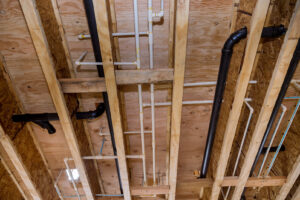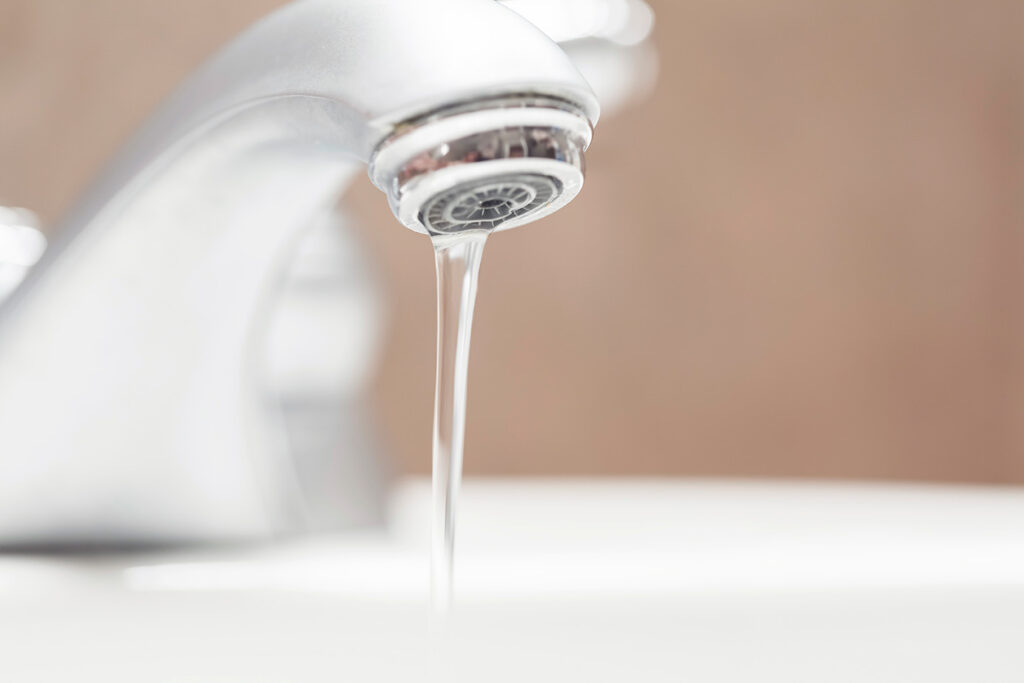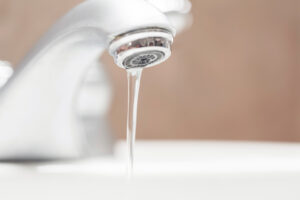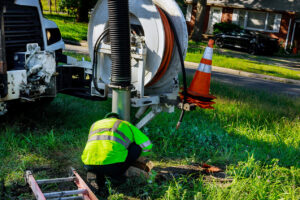Persistent low water pressure can cripple daily routines and critical operations alike, from trickling faucets in homes to inadequate flow in commercial fire-suppression systems. Installing a booster pump is a proven remedy that restores consistent pressure, improves appliance performance, and ensures reliable water delivery. This guide explores the main causes of low pressure, explains how booster pumps work, reviews types and selection criteria, outlines professional installation steps, presents maintenance best practices, highlights benefits for homeowners and businesses, and examines costs and return on investment. As specialists in advanced plumbing services, Pither Plumbing delivers expert booster pump installation, tailored assessments, and energy-efficient solutions to guarantee optimal water flow.
What Causes Low Water Pressure in Residential and Commercial Buildings?
Low water pressure arises when supply and demand lose balance or the distribution network degrades.
Insufficient flow can result from outdated piping, excessive demand in multi-story structures, or hidden leaks and blockages.
Recognizing these root factors is essential before selecting and installing a booster pump that matches your building’s needs.
Causes of Low Water Pressure
Low water pressure can stem from various factors, including aging infrastructure, high water demand, and the presence of leaks or blockages within the plumbing system. These issues can significantly impact the efficiency and functionality of water distribution in both residential and commercial settings.
Jones, A., Plumbing Systems and Water Pressure (2022)
This research provides a foundational understanding of the common causes of low water pressure, which is essential for the article’s discussion on booster pump solutions.
How Does Aging Plumbing Infrastructure Affect Water Pressure?
Aging pipes corrode, accumulate mineral scale, and develop internal roughness that restricts flow. Over decades, galvanized steel and cast-iron lines build up sediment, reducing internal diameter and cutting pressure at points of use. Replacing or lining old mains often reveals significantly improved baseline pressure, laying the groundwork for effective booster pump installation.
What Role Do High Water Demand and Building Height Play in Low Pressure?
When multiple fixtures run simultaneously—especially on upper floors of tall buildings—available municipal pressure may not suffice. Gravity imposes head loss in vertical risers, leading to pressure drops of several PSI per story. Booster pumps bridge that gap, delivering consistent flow regardless of peak demand or elevation differences.
How Can Leaks and Pipe Blockages Contribute to Pressure Loss?
Hidden leaks siphon off flow before it reaches endpoints, while mineral deposits and debris form partial blockages that interrupt smooth passage. Even small perforations can lower system pressure by diverting water into walls or underground voids. Regular leak detection and pipe cleaning are critical preliminary steps before commissioning a booster pump for maximum effectiveness.
How Does a Booster Pump Work to Increase Water Pressure?
A booster pump elevates inlet pressure by converting electrical energy into mechanical force, pushing water through an impeller and into a pressure tank or network. This mechanism allows on-demand pressure boost, stabilizes flow, and compensates for supply fluctuations—delivering reliable performance in homes and large commercial installations.
What Are the Key Components of a Booster Pump System?
Component | Attribute | Role |
Pump Unit | Horsepower, Stages | Drives water through impellers for pressure increase |
Pressure Tank | Volume, PSI Rating | Stores pressurized water and reduces pump cycling |
Pressure Sensor | Switch Type, Setting | Monitors system pressure and triggers pump on/off cycles |
Control Panel | VFD or Fixed Speed | Regulates motor speed for energy-efficient pressure control |
Each element works in concert to deliver stable water pressure; selecting the right combination ensures peak performance and longevity.
How Do Booster Pumps Improve Water Flow in Multi-Story and Commercial Buildings?
By sensing a drop below set PSI levels, the control panel activates the pump to maintain target pressure throughout complex networks. This active regulation prevents surges and setbacks, enabling simultaneous operation of multiple fixtures at higher elevations. The result is uninterrupted flow to top floors, improved equipment reliability, and consistent service across every outlet.
What Are the Energy Efficiency Benefits of Variable Speed Drive (VFD) Booster Pumps?
Variable speed drive booster pumps adjust motor RPM to match real-time demand rather than operating at full capacity constantly. This modulation can reduce energy consumption by up to 50% compared to fixed-speed models, lower inrush currents at startup, and prolong component life by minimizing cycling stress. Such efficiency gains translate directly into cost savings and lower carbon footprints.
What Are the Types of Booster Pumps and How Do You Choose the Right One?
Booster pumps vary by stage configuration, priming method, and control technology. Understanding these categories and matching them to your application ensures seamless integration and reliable pressure management in residential or commercial settings.
What Is the Difference Between Single-Stage and Multi-Stage Booster Pumps?
Single-stage pumps use a single impeller to increase pressure, making them suitable for low-rise buildings and moderate demand. Multi-stage pumps stack impellers, achieving higher PSI gains in compact assemblies—ideal for high-rise structures or processes requiring elevated pressure. Selecting between them depends on target PSI, flow rate, and spatial constraints.
When Should You Consider Variable Speed or Self-Priming Booster Pumps?
Variable speed models excel where demand fluctuates, such as hotels or office towers, by adjusting output to real-time needs. Self-priming pumps are essential when the suction line may be exposed to air pockets or above the water source—common in remote wells or open water tanks. Matching pump type to site conditions avoids cavitation and ensures reliable startup.
How Do You Size a Booster Pump for Residential vs. Commercial Needs?
Sizing requires calculating peak flow (GPM) and desired pressure increase (PSI), then selecting a pump curve that meets or exceeds both metrics. Residential sizing often targets 40–60 PSI at 10–20 GPM, while commercial systems may demand 80–100 PSI at 50–200 GPM. Professional assessment of fixture counts, elevation changes, and supply pressure establishes precise equipment requirements.
What Is the Booster Pump Installation Process for Homes and Commercial Properties?
Booster pump installation involves systematic assessment, careful equipment selection, precise plumbing integration, and safe electrical connections. Engaging experienced technicians ensures compliance with codes and optimal long-term performance.
How Is a Site Assessment Conducted for Proper Pump Sizing?
A site assessment begins with measuring existing inlet pressure and flow rates at representative fixtures. Technicians survey pipe materials, layout, elevation differences, and demand patterns. These data inform hydraulic calculations that determine required pump capacity, pressure settings, and accessory components such as expansion tanks and backflow preventers.
What Are the Professional Installation Steps and Electrical Considerations?
- Mounting: Secure pump and tank on a vibration-isolated base.
- Piping: Connect suction and discharge lines, install isolation valves, check for proper alignment.
- Controls: Wire pressure sensors, control panel, and any VFD units to the pump motor.
- Electrical: Adhere to local electrical codes, furnish proper breakers, grounding, and conduit.
- Testing: Pressurize system, adjust switch settings, and verify stable operation under load.
This sequence ensures safe, code-compliant installation and immediate system readiness.
How Long Does Booster Pump Installation Typically Take?
A residential booster pump installation often completes within one day, including site assessment, equipment mounting, plumbing, and electrical work. Commercial installations for multi-pump systems may require two to three days, depending on complexity, permitting, and integration with existing infrastructure.
How Can Regular Booster Pump Maintenance Extend Equipment Lifespan?
Routine maintenance preserves booster pump performance, prevents unexpected downtime, and protects warranty coverage. Scheduled checks, cleaning, and minor adjustments avert major repairs and extend service life by up to 30%.
What Are Common Booster Pump Problems and How Are They Troubleshot?
Problem | Indicator | Corrective Action |
Pressure Cycling | Rapid on/off switching | Adjust pressure switch differential or tank volume |
Vibration/Noise | Excessive rattling | Align shaft, tighten fittings, check bearings |
Low Flow/Pressure | Reduced outlet PSI | Clean strainer, inspect impeller, verify suction |
Overheating | Motor heat, tripping | Check ventilation, inspect electrical connections |
Addressing these conditions promptly prevents escalation and supports continuous operation.
What Does a Commercial Booster Pump Maintenance Checklist Include?
Key tasks for a commercial program encompass seal inspections, lubricant checks, electrical terminations test, and control calibration. Performing these steps quarterly or semi-annually safeguards critical infrastructure and reduces failure risk.
When Should You Schedule Professional Repair Services?
Engage certified technicians when diagnostic checks reveal persistent anomalies—such as erratic pressure swings, motor faults, or leak detection beyond simple tightening. Early intervention by specialists minimizes downtime and avoids costly emergency repairs.
What Are the Benefits of Booster Pump Installation for Commercial and Residential Clients?
Booster Pump Benefits
Booster pumps offer significant advantages for both homeowners and businesses, including consistent water pressure, improved appliance performance, and energy savings. These benefits contribute to enhanced comfort, operational efficiency, and reduced utility costs.
Smith, B., Commercial Plumbing Solutions (2023)
This study highlights the practical benefits of booster pump installation, which directly supports the article’s claims about the value of these systems.
How Does a Booster Pump Ensure Consistent Water Pressure for Businesses?
By actively regulating pipeline pressure at setpoints, booster pumps prevent downtime for critical processes—whether supplying commercial kitchens, cooling towers, or fire protection lines. This control eliminates customer complaints, supports uninterrupted production, and protects revenue streams.
What Operational and Energy Savings Can Businesses Expect?
Modern booster systems with VFD controls cut energy usage by matching output to real-time demand, reduce wear-and-tear on downstream equipment, and minimize peak-demand charges. Over five years, these savings often offset initial investment through lower utility bills and reduced maintenance costs.
How Does Booster Pump Installation Improve Home Comfort and Appliance Performance?
Stable water pressure enhances shower experiences, speeds dishwasher cycles, and protects plumbing fixtures from damaging pressure spikes. Homeowners enjoy balanced flows at every faucet and longer appliance lifespans when water delivery remains within optimal PSI ranges.
What Are the Typical Costs and Return on Investment (ROI) for Booster Pump Installation?
Investment in a booster pump system varies according to capacity, control sophistication, and installation complexity. Understanding cost drivers helps stakeholders plan budgets and anticipate payback periods.
What Factors Influence the Cost of Booster Pump Installation?
- Pump Capacity: Higher GPM and PSI ratings increase equipment costs.
- Control Type: VFD-equipped systems command premium pricing over fixed-speed units.
- Site Complexity: Extensive piping modifications, electrical upgrades, or tight spaces raise labor expenses.
- Permitting and Inspection: Municipal requirements and specialty testing add administrative charges.
These elements collectively determine initial outlay and influence ROI timelines.
How Does Energy Efficiency Impact Long-Term Savings?
Efficient pumps reduce annual power consumption, translating into lower operational expenses. Systems optimized with VFDs and pressure-tank buffers can recoup up to 40% of installation costs through energy savings within three to five years, depending on usage patterns.
Are There Financing or Incentive Options Available?
Financing packages, utility rebates, and tax incentives often offset capital costs for energy-efficient booster systems. Businesses and homeowners should explore local programs that reward upgrades, reduce demand charges, and improve overall sustainability.
What Are Frequently Asked Questions About Booster Pump Installation and Low Water Pressure?
Clients commonly wonder how to raise building pressure, what triggers low flow, and when professional servicing becomes necessary. The following insights reflect those typical concerns and recommended solutions without resorting to formal Q&A lists.
How Do You Increase Water Pressure in a Commercial Building?
Many facility managers boost pressure by installing a pump assembly sized for peak demand and calibrated for target PSI. In combination with pipe cleaning, pressure regulators, and leak repairs, a properly configured booster pump delivers the reliable flow needed throughout every story and branch line.
What Causes Low Water Pressure in Commercial and Residential Properties?
Underlying causes include corroded or scaled piping, high-rise head losses, municipal supply fluctuations, and hidden leaks. Addressing these factors first—through infrastructure repairs and demand assessments—ensures that a booster pump operates against optimized baseline conditions.
How Often Should Booster Pumps Be Maintained or Serviced?
Routine inspections every six months, with filter cleaning and electrical checks, prevent minor issues from escalating. High-usage or critical-service installations may benefit from quarterly servicing to verify control settings and mechanical integrity.
When Is It Time to Replace a Booster Pump?
Signs such as persistent pressure instability, frequent motor overloads, or irreparable corrosion indicate that replacement surpasses repair. Upgrading to modern, energy-efficient models also yields improved performance and lower lifecycle costs.
Reliable booster pump installation starts with expert assessment, quality equipment selection, and precise integration. Pither Plumbing combines proven methodologies, cutting-edge controls, and dedicated service to restore water pressure, enhance energy efficiency, and safeguard building operations. Contact Pither Plumbing today for a tailored consultation and ensure consistent water flow for your home or business.







